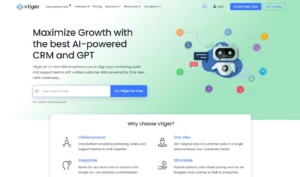Understanding Your Lead Generation Metrics: A Comprehensive Guide

Lead generation is the lifeblood of any business. It’s the process of identifying and attracting potential customers who have shown interest in your range of products or services. Generating leads is highly important for any business, but it’s even more important to measure and analyze the right metrics to ensure that you’re moving in the right direction with your strategy.
Which lead generation metrics (LGM) are essential for your business? What are they important and how to leverage them for sustainable business growth? In this article, we’ll answer all of these questions and then some so that you can maximize your reach and watch your pipelines fill up with quality leads in no time!
Key Metrics
Conversion Rate
The conversion rate (CR) is a fundamental metric for any business. It serves as a powerful indicator, recording the percentage of leads that take a desired goal (known as conversion) and showing you how effective (or not) your strategy has been. The math here is simple: the higher your CR, the greater your success in transforming users into customers.
To calculate CR, divide the total number of users who have taken the desired action on your website by the number of leads that have been exposed to an ad. Then multiply the number by 100. For instance, if you have an audience of 100 people and 20 of them take an action (whatever the goal is), your CR is 20%.
Whether this CR is good or not totally depends on your industry and business model. For some niches, even 2% is a lot, while others may find 20% not to be sufficient. Therefore, it’s essential to establish benchmarks and assess your conversion rate by comparing it to industry standards.
Why Is It Important?
The CR is, without a doubt, one of the most important metrics to keep an eye on. Not only does it show you if the lead generation strategies that your team has implemented actually work, but it also helps you gauge the quality of your leads and the efficiency of sales processes.
This way, if you track and continuously optimize your CR, you can improve your overall sales performance and drive business growth.
How to Leverage It?
To leverage the CR metric for business growth, focus on the tactics to improve the quality of your leads. Analyze your conversion rate at different stages of the customer journey to identify areas of improvement. Implement targeted lead nurturing strategies, personalized messaging, and optimized funnels to increase your CR and drive more customers to purchase.
Cost Per Lead
Cost per lead (CPL) is another metric that should be closely monitored. This metric measures the average of money spent to acquire a single lead and gives you an idea of the profitability of your campaigns and efforts. By tracking CPL, you can determine which channels bring in the best results and allocate your budget more wisely.
CPL can be determined by making a simple calculation: simply divide the total spend by the number of leads generated. To give you an example, if you spend $500 on a campaign and generate 50 leads, your cost per lead is $10.
Why Is It Important?
CPL helps you assess the financial viability of your lead generation efforts. What’s more, it allows you to evaluate the return on investment (ROI) of your marketing campaigns and determine the most efficient channels and strategies. As a result, you can see which of them delivers the best results and fine-tune your marketing approach.
How to Leverage It?
To achieve better results and drive business growth, it’s important to track CPL and optimize your marketing spend as you go. Even within a few weeks of running marketing campaigns, you should be able to spot the most impactful channels. Figure out why they attract the most leads and what tactics have been used to make it the case.
Based on the results of the analysis, allocate more resources to high-performing channels and campaigns while optimizing or discontinuing underperforming ones. This way, you can generate a higher volume of leads at a lower cost, driving business growth while maintaining its profitability.
Return on Investment (ROI)
Another metric to monitor is ROI. Just like the name suggests, ROI allows you to assess the profitability of your lead generation efforts by quantifying the return you get from your marketing investments. If the ROI is positive, this shows that your efforts are generating satisfactory results, while a negative ROI calls for a reassessment of your strategies.
How to find out what your ROI is? Just subtract the marketing cost from the revenue generated and divide the result by the marketing cost. Then multiply the quotient by 100 to express it as a percentage. For instance, if you spend $1,000 on a campaign and generate $5,000 in revenue, your ROI is 400%.
Why Is It Important?
More so than all other metrics, ROI allows you to understand what kinds of returns you’re getting from your marketing investments. By tracking and optimizing your ROI, you can ensure that your efforts contribute positively to your overall business growth and profitability.
How to Leverage It?
The goal that businesses and marketers should aim for when running their campaigns is to maximize the return on their marketing investments. To do this, it’s essential to continuously monitor the ROI of all campaigns and channels that are currently in work, focusing on those that perform the best.
At the same time, you should also analyze campaigns with low or negative ROI. Don’t give up on them too early. Try to get to the reason why they’re not performing as well as desired and make adjustments to improve them. Understanding the ROI of your campaigns will help you take the right direction in distributing your marketing budget and resources.
4. Customer Acquisition Cost (CAC)
While CAC might seem pretty similar to CPL, they aren’t the same metrics. CPL, as we’ve stated earlier, specifically measures the cost of generating a lead, which is an early stage in the customer journey. CAC, on the other hand, encompasses the entire customer acquisition process, from generating leads to conversion.
In essence, CAC offers a more comprehensive view of the costs associated with acquiring new customers, taking into account the expenses incurred throughout the entire marketing funnel.
To calculate it, divide the cumulative expenses associated with sales and marketing by the total count of newly acquired users. For example, the CAC of a company that invests $10,000 in their marketing activities and acquires 100 new customers would be $100.
Why Is it Important?
First things first, knowing CAC makes it easier to identify areas for optimization and improvement in the customer acquisition process. By closely monitoring CAC, businesses can analyze factors influencing it, including lead quality, conversion rates, and sales efficiency, and tweak their campaigns to improve their overall efficiency.
5. Lead-to-Customer Conversion Rate
Now, let’s talk about the lead-to-customer (lead-to-sale) conversion rate. This metric allows businesses to see how many leads successfully convert into paying customers and assess the success of their marketing endeavors. Obviously, the higher this number is, the better quality leads you’re attracting.
Lead-to-customer conversion rate can be found by dividing the total number of your customers by the number of leads and multiplying it by 100. Let’s take the same example and say you’ve got 100 leads and 10 of them make a purchase (subscribe, etc.). In this case, your lead-to-sale conversion rate is 10%.
Why Is It Important?
Although all businesses strive to attract more leads, the end goal of doing so is to turn them into customers, otherwise, the effort will not pay off as there won’t be any revenue. When it comes to business growth, quality matters, not quantity.
By analyzing your CR from leads to sales, you can understand how much interest people who come to your site have in your products or services and whether you’ve chosen the right channels to attract them. It would also give you an idea of how your campaigns could be improved in order to increase engagement with those who’ve not taken any actions yet.

Now that we’ve covered the key metrics of lead generation that marketers should keep a close eye on, let’s take a look at the funnel. Understanding how this funnel looks is important for effectively tracking and optimizing your metrics and choosing the right ways to interact with your potential customers.
- Awareness. This stage of the funnel is all about attracting customers’ attention and making them aware of your brand. Metrics that help measure awareness include website traffic, social media engagement, email open rates, and bounce rates.
- Interest. The next stage is to generate interest and capture leads’ contact info. That’s where you need to keep track of the metrics such as landing page conversion rate, form submissions, and content downloads.
- Decision. The decision stage focuses on nurturing leads and guiding them toward making a purchase decision. To understand how likely your customers are to make a purchase, track email click-through rates, demo requests, and offer acceptances.
- Action. This is the stage of the funnel where leads finally become paying customers. Whether your customers convert or not can be tracked by monitoring metrics such as CR, customer retention rate, and revenue generated.
Optimizing Lead Generation Strategies
Are you looking for some practical tips to enhance your lead generation strategy? Well, you’ve come to the right place at Top Lead Generation company. Below, we’ll outline a few steps to optimize this process and attract high-quality leads. However, keep in mind that achieving success requires regular and ongoing optimization.
Identify Areas for Improvement Based on Metrics
Once you know the metrics to look at, take the time to analyze the areas that are underperforming or not meeting your expectations. For example, if your CR is low, it could be because your landing pages are difficult to navigate or call-to-action messages are hard to find.
Even the color of the CTA button can have a significant impact on CR, let alone the text. Make sure that your call-to-action messaging doesn’t come across too aggressive and leaves customers the choice of what they can do.
Test and Refine Lead Generation Tactics
When you have a list of hypotheses that you think could help improve your CR, it’s time to implement A/B testing. Test different variations of landing pages, CTAs, email subject lines, and content to identify the most effective approaches, including the strategic implementation of lead scraping techniques.
Obviously, you shouldn’t change everything straight away. Make adjustments bit by bit to understand the impact of each change on your tactics. By doing so, you’ll be able to make smarter decisions and increase your CR over time.
Embrace Continuous Optimization
As we mentioned, lead generation is an iterative process. This means it should be continuously optimized to ensure maximum effectiveness and results. Even when things look good, it’s important to continue refining and improving your strategies, because if you won’t do this, your competitors will.
Final Thoughts
To sum up, all businesses, regardless of the industry, need to understand and leverage their LGM to achieve success and growth.
By keeping an eye on the marketing metrics such as CR, cost per lead, ROI, CAC, and CR from leads to customers and analyzing them, you can extract valuable insights into the efficacy of your strategies and sales efforts.
More importantly, based on this info, you can make smarter decisions, allowing you to attract not just leads but high-quality leads and successfully convert them into customers.
Use our guide to make sure that you are tracking all the right metrics and your strategies are optimized to drive business growth.




